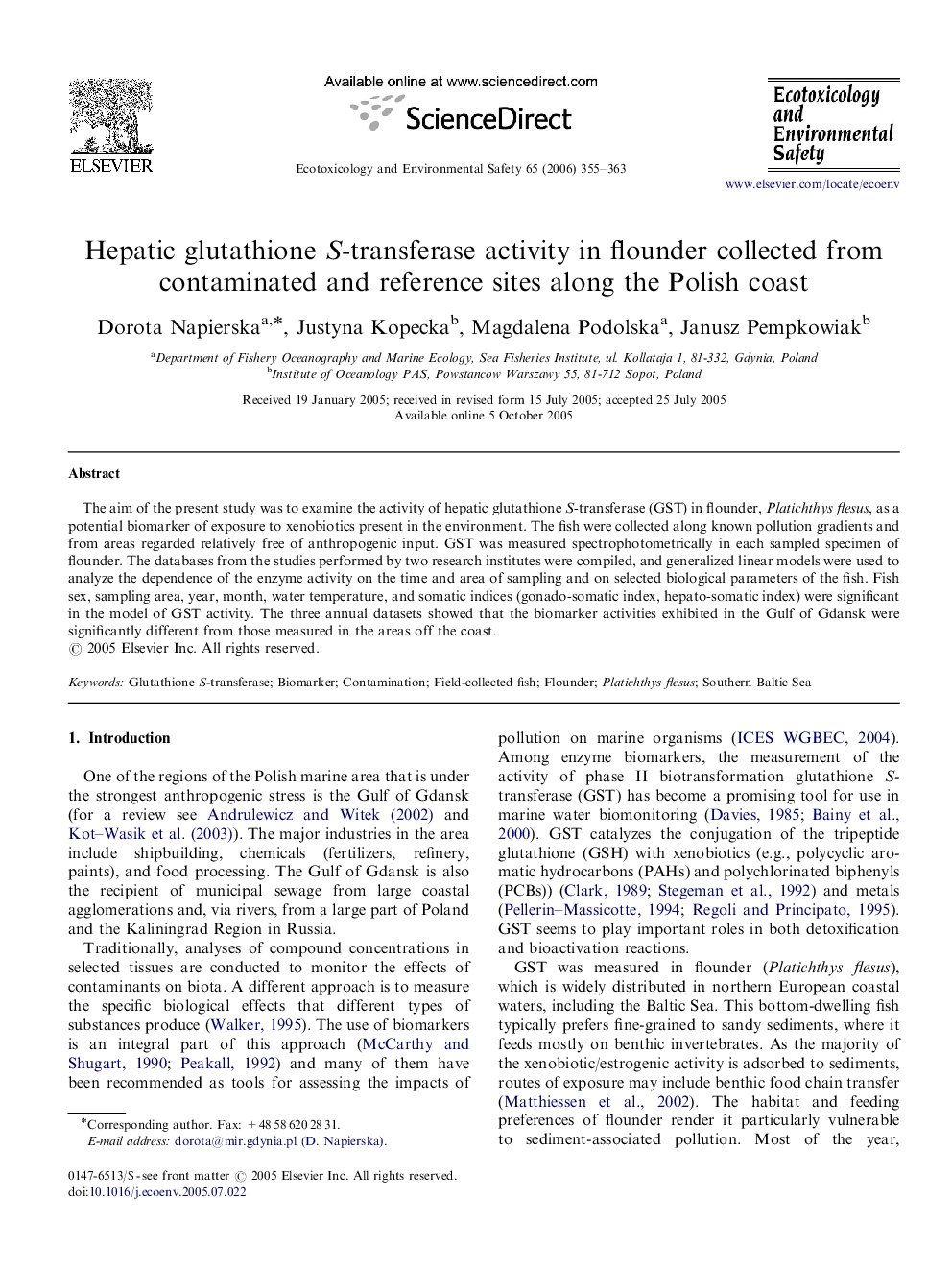| Article ID | Journal | Published Year | Pages | File Type |
|---|---|---|---|---|
| 4422549 | Ecotoxicology and Environmental Safety | 2006 | 9 Pages |
The aim of the present study was to examine the activity of hepatic glutathione S-transferase (GST) in flounder, Platichthys flesus, as a potential biomarker of exposure to xenobiotics present in the environment. The fish were collected along known pollution gradients and from areas regarded relatively free of anthropogenic input. GST was measured spectrophotometrically in each sampled specimen of flounder. The databases from the studies performed by two research institutes were compiled, and generalized linear models were used to analyze the dependence of the enzyme activity on the time and area of sampling and on selected biological parameters of the fish. Fish sex, sampling area, year, month, water temperature, and somatic indices (gonado-somatic index, hepato-somatic index) were significant in the model of GST activity. The three annual datasets showed that the biomarker activities exhibited in the Gulf of Gdansk were significantly different from those measured in the areas off the coast.
